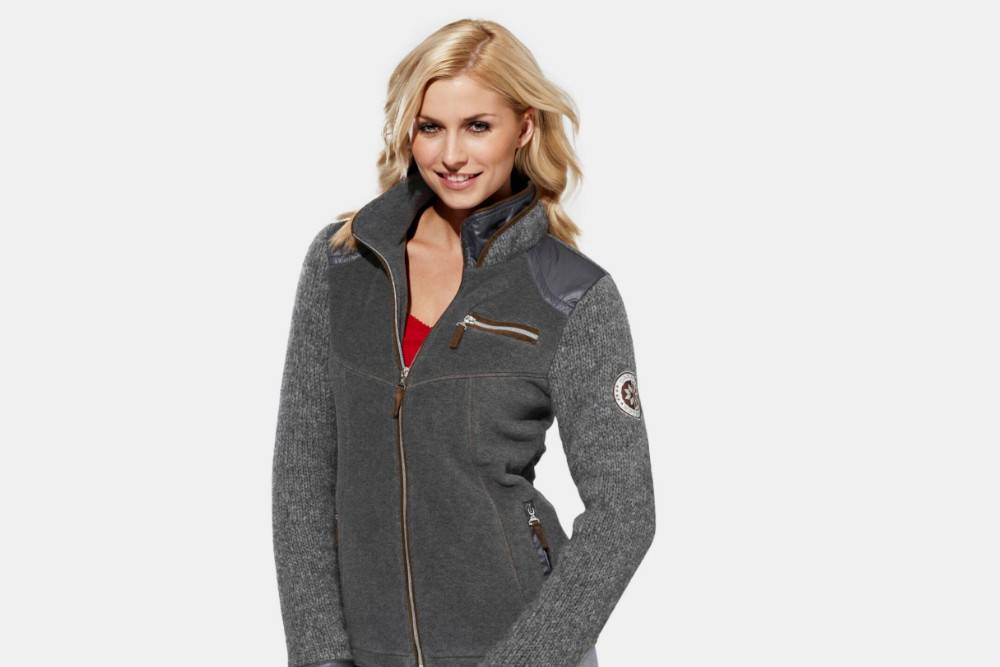
Heine is a German retailer founded in 1951 in Karlsruhe, Germany. The multinational clothing-retail company creates affordable fashion for women.
Heine makes clothing, accessories, shoes, swimwear, and jewelry. The Otto Group owns the Heine label and brands like About You, Bonprix, Frankonia, Lascana, Limango, and more.
Heine operates as an international e-commerce and fashion retailer with about 4,000 employees in 30 countries. It also sells homeware, furniture, and home decor.
Heine is working with ambitious targets to minimize its ecological footprint. It considers its impact on the climate, ecosystems, and society and has the long-term goal of achieving climate neutrality.
Panaprium is independent and reader supported. If you buy something through our link, we may earn a commission. If you can, please support us on a monthly basis. It takes less than a minute to set up, and you will be making a big impact every single month. Thank you!
Sustainability Rating: 5/10
Rating FAQ
Category: Clothing, accessories, shoes, bags, jewelry
For: Women
Type: Basics, denim, knitwear, activewear, underwear, loungewear, swimwear, outerwear, nightwear, flats, sandals, sneakers, boots
Style: Casual
Quality: Low
Prices: $
Sizes: 2XS-2XL, 0-14 (US), 2-16 (UK), 32-44 (EU), 4-18 (AU)
Fabrics: Cotton, linen, ramie, jute, lyocell, modal, viscose, cupro, acetate, polyester, nylon, spandex, polyethylene, polypropylene, acrylic, neoprene, polyurethane, rubber, leather, wool, silk, down
100% Organic: No
100% Vegan: No
Ethical & Fair: Yes
Recycling: Yes
Producing countries: Turkey, India, China, Bangladesh, Cambodia, Morocco, Pakistan, Vietnam, Tunisia, Egypt, Etiopia, Uganda, Madagascar, Ukraine, Romania, Moldova, Bulgaria, Serbia, Bosnia, Albania, Macedonia, Greece, Myanmar, Thailand, Laos, Indonesia
Certifications: GOTS, OCS, BCI, GRS, RCS, FSC, Oeko-Tex, Bluesign, SMETA, BSCI, SA8000
Sustainability Practices
Heine takes wide-ranging measures to protect biodiversity, reduce its consumption of water, energy, and other resources, avoid waste, and combat climate change.
It wants to be better and more efficient by looking at every aspect of its value chain to ensure the healthy functioning of our planet. However, the majority of its business remains detrimental to the environment.
Heine only uses a tiny proportion of organic materials like organic cotton or recycled materials such as recycled polyester and regenerated nylon.
Most of its fabrics are natural without relevant certifications, such as regular cotton or linen, or synthetic petroleum-based fibers, such as polyester, nylon, acrylic, and more.
Heine also uses a small proportion of semi-synthetic fibers or regenerated cellulosic fabrics such as Tencel lyocell, modal, acetate, and viscose.
Tencel is an eco-friendly fiber made with wood pulp from certified sustainable forests. But only a tiny proportion of the materials used by Heine are environmentally friendly and sustainable.
Heine publishes a list of all its manufacturers and processing facilities on its corporate website, the Otto Group. It aims to ensure compliance with social standards and environmental protection.
The 2022 Fashion Transparency Index gave Otto a score of 18% based on how much the group discloses about its social and environmental policies, practices, and impacts.
Heine manufactures its clothes in Turkey and many other East Asian countries, where human rights and labor law violations happen every day.
The German clothing retailer shows some labor certification standards that ensure good working conditions, health, safety, and other human rights for workers in its supply chain.
Heine has a code of conduct that applies to all its suppliers and subcontractors based on the regulations set by the International Labor Organization (ILO).
Heine assesses compliance with its Code of Conduct by informal visits or third-party audits with or without notice. It works with international and local unions and NGOs to improve the working conditions in its factories.
Heine doesn't use exotic animal skin, hair, fur, or angora. But it uses leather, wool, silk, and down feathers to manufacture many of its clothing pieces.
These animal-derived materials are cruel and unethical. They also harm the environment by producing greenhouse gases and waste. More sustainable alternatives exist.
Sustainability Goals
Heine has committed to reaching climate neutrality by 2030. It will operate its locations on green electricity and use certified offset projects to align its climate targets with the Paris Climate Agreement.
Heine plans to only use FSC-certified wood for its furniture production by 2025. It will also use FSC-certified or EU Ecolabel paper for its catalogs by 2025.
Buy Here
Discover Heine's sustainable collections at Heine.de.
Reviews And Experiences With Heine
Have you had (good) experiences with shopping at or the products of Heine? Then leave us your rating below.
What We're Up Against
Multinational corporations overproducing cheap products in the poorest countries.
Huge factories with sweatshop-like conditions underpaying workers.
Media conglomerates promoting unethical, unsustainable products.
Bad actors encouraging overconsumption through oblivious behavior.
- - - -
Thankfully, we've got our supporters, including you.
Panaprium is funded by readers like you who want to join us in our mission to make the world entirely sustainable.
If you can, please support us on a monthly basis. It takes less than a minute to set up, and you will be making a big impact every single month. Thank you.






























0 comments